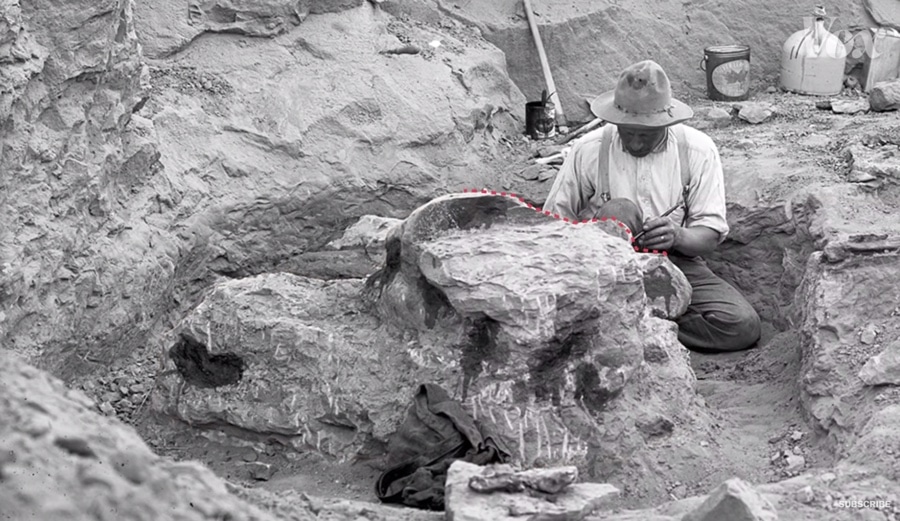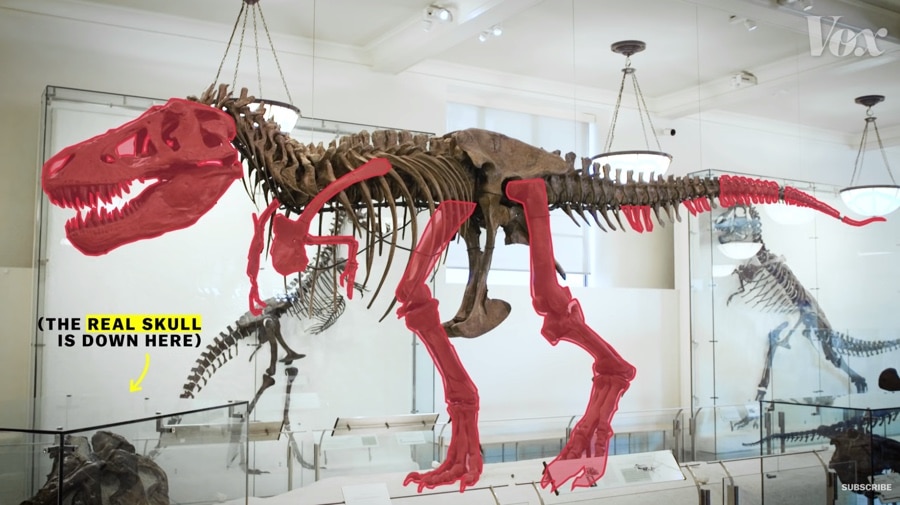When paleontologists uncover a dinosaur they usually only find part of the animal, but when we walk through a museum we see exhibits that paint a full picture – so how do they fill in all those blank spaces? In the early 1900’s artists used to hand carve the pieces, but we’ve come a long way in the past century – both technologically and scientifically.
Now, we’re living in what some call a “golden age” for paleontology. Researchers are uncovering nearly one new species of dinosaur a week – making building exhibits easier and more efficient.
Learn how scientists solved this dinosaur puzzle, from the American Museum of Natural History’s Tyrannosaurs Rex, found in 1908, to its T. Rex, the Ultimate Predator exhibit. This Vox video by Kimberly Mas, features AMNH’s Mark Norell.


Related reading at SciAm: The Brontosaurus Is Back. “Decades after scientists decided that the famed dinosaur never actually existed, new research says the opposite.”
Plus, the PBDB Navigator, an interactive tool for exploring the Paleobiology Database through space, time, and taxonomy.
And a NPR report about T.rex’s first discovery by Barnum Brown: Bone To Pick: First T. Rex Skeleton, Complete At Last.
Watch these videos next: Rebuilding a real T.rex with scientific research & new tech, how do you dismantle a dino? and what did a baby T.rex look like?
Curated, kid-friendly, independently-published. Support this mission by becoming a sustaining member today.

